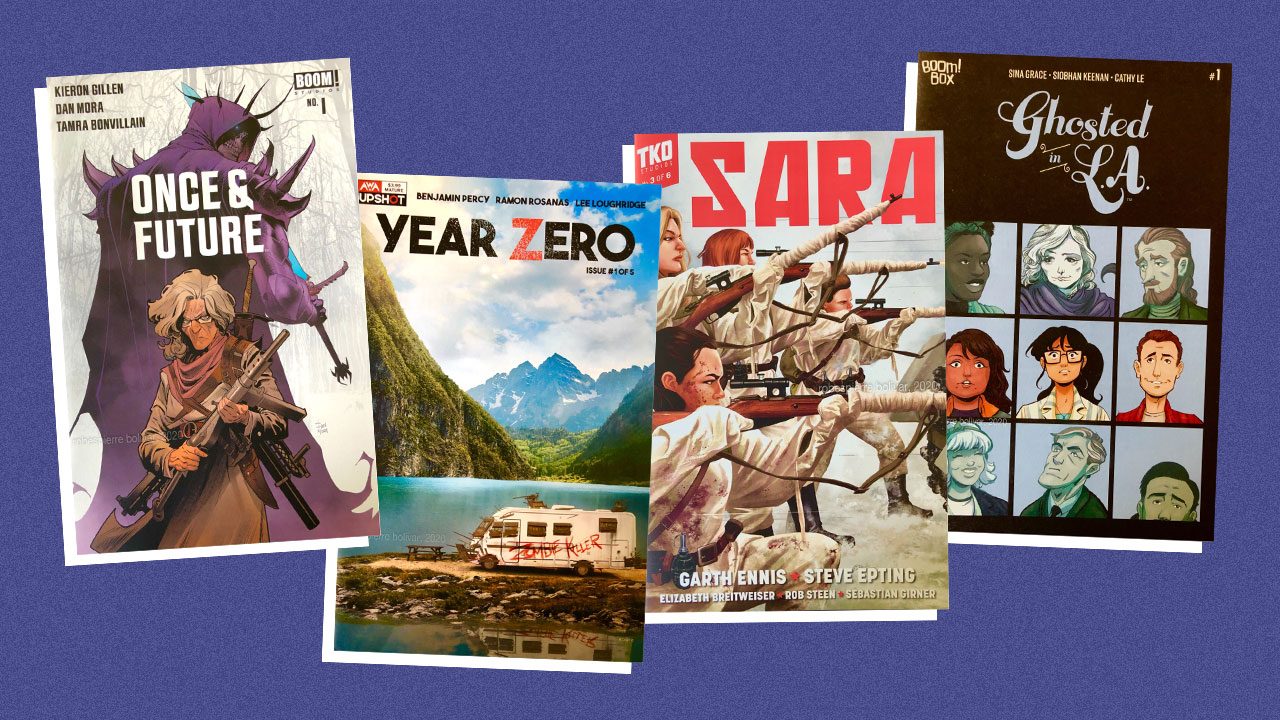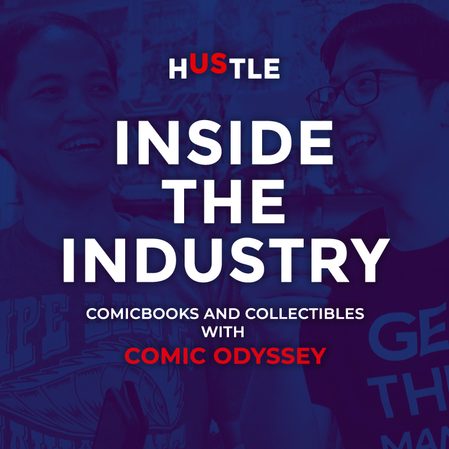SUMMARY
This is AI generated summarization, which may have errors. For context, always refer to the full article.

In the interest of full disclosure, I read novels from a variety of genres (Jane Austen, John Steinbeck, Stephen King, JK Rowling and Ursula Le Guin are favorites), history books and historical fiction (currently reading Barbara Tuchman’s classic The Guns of August and Erik Larson’s The Splendid and the Vile) and poetry (my copy of Walt Whitman’s Leaves of Grass has a lot of bookmarks marking various pages).
But I digress.
These days, you’d be hard-pressed to find someone who doesn’t know the Avengers, Spider-Man, Iron Man, Batman, Wonder Woman or, heck, even Thanos.
Comic books and the characters who populate their pages have become so pervasive in our modern pop culture that we see their likenesses on cellphone covers, t-shirts, fast food kiddie meals, umbrellas, public transport, car windows, shampoo bottles and grocery items. These super-heroes star in some of the most eagerly awaited – and, for film studios, among the most financially rewarding – motion pictures. The San Diego International Comic Book Convention (or SDCC) morphed from a smallish gathering of comic book fans to a veritable pop culture mecca.
For a long-time comic book fan like me, the near-ubiquity of comic book-based pop culture items is a breath of fresh air.
I still remember a time when most people I knew considered comic books as “niche,” or perhaps even a sub-culture, relevant only to a small group of your stereotypically bespectacled geeks (yes, I wear corrective eyeglasses) who wear only “geek-shirts” (no, I wear “regular clothes” most of the time and don’t even own a super-hero themed t-shirt).
Back then, “geek” and “nerd” were derisive terms.
The popularity of Marvel and DC super-heroes nowadays also helps resuscitate what was, just a few years ago, a struggling comic book industry.
However, this popularity can be a double-edged sword. This comic book resurgence, powered as it is by the popularity of the Avengers and the Justice League, tends to create a myopic view of comic books and comic book fans. The Big Bang Theory’s Amy Farrah Fowler best summed up this narrow view when she declared comic books as “picture books about flying men in colorful underwear.”
Some people I know believe this stereotype. Some have asked me why I (a grown man pushing 50) still read comic books. They view comic books as lesser than novels because “it has drawings and very few words.” Others argue that comic books are the height of escapism since they “deal exclusively in fantasy and science-fiction.” Still, others say “comic books are just for kids.”
These assessments are not entirely unfair.
Many comic books do feature characters who fly and/or wear skin-tight spandex costumes. Comic books, by their nature, combine words, drawings and lettering to tell stories. Many of these stories involve fantastical elements – and I don’t just mean super powers and anatomically-improbable physiques. And super-heroes in general do cater to a relatively younger set (I, for one, started reading comic books when I was in grade school).
But these views do not, by any means, paint a complete picture of what comic books are and how they have evolved over the decades.
If I may again borrow a quote from The Big Bang Theory, comic books “employ story-telling through sequential art, a medium that dates back to the cave paintings in Lascaux, France.” Art has always been a defining feature of comic books, and comic book art these days are downright amazing. Take a look at the fully-painted books created by the award-winning Alex Ross, or the photo-realistic quality drawings done by Stanley “Artgerm” Lau, Inhyuk Lee, and Shannon Maer, or the haunting and textured works by Gabriele dell’Otto, Andrea Sorrentino, and Francesco Mattina.
Comic books are a medium – not a genre – of story-telling. Many of them deal with very serious issues.
Comic book creators have been known to use super-heroes as literary foils in their bouts with very serious, real-world topics. Grant Morrison’s classic Batman: Arkham Asylum (A Serious Place on Serious Earth) and Sean Murhpy’s tour-de-force, Batman: White Knight / Curse of the White Knight, effectively uses the Dark Knight and his arch-nemesis, the Joker, to explore the nature of sanity. Fan-favorite Chris Claremont exposes the dangers of zealotry and racism in X-Men: God Loves, Man Kills and Days of Future Past (co-written with John Byrne).
There are also many comic books that do not even feature super-heroes.
Take Neil Gaiman’s critically-acclaimed The Sandman, which ponders the secret of dreams and dreaming.Or Joe Kubert’s Fax from Sarajevo, about the horrors of the 1990s genocide in the former Yugoslavia and a family’s indomitable spirit of survival. James Tynion IV’s Something is Killing the Children is primarily a horror comic book but has, as its undercurrent, musings about how children can be more attuned to the world than adults.
And Jeff Loveness’ Strange Skies Over East Berlin, about an American spy’s terrifying and otherworldly discovery in Cold War-era Germany, also serves as a treatise on the nature of truth and the lies people tell themselves to cope with trauma.
There are comic books which experiment with story-telling techniques and narrative structure. Benjamin Percy’s Year Zero provides a fresh take on a zombie apocalypse by using multiperspectivity. Zac Thompson and Lonnie Nadler’s Undone by Blood or The Shadow of a Wanted Man effectively uses meta-textual narrative. Jonathan Hickman’s acclaimed Dawn of X / Powers of X tweaks the concept of “frame story” and the “predestination paradox” in re-starting the X-Men storyline.
I am excited by the fact that recent years have seen a plethora of excellent independent publishers, which release so many amazing titles. Boom Studios, Image, AWA Upshot, TKO and Vault Comics provide creators freer reign over content.
These publishers have been able to produce impressive, beautiful, even disquieting stories like Jeff Lemire’s chilling, Twilight Zone-esque masterpiece Gideon Falls; Garth Ennis’ haunting Sara, about how an all-female Soviet sniper regiment during World War II found their identity and in the midst of war; Sina Grace’s quirky and moving Ghosted in L.A., which is both a love letter to the City of Los Angeles and an exploration of friendship, identity, and the things that make it difficult for people to move on; and Ram V’s exquisite These Savage Shores, a vampire story that serves as an allegory for English colonial rule in India.
All of these are as beautifully written as best-selling novels. This is in itself a feat, since writing for comic books demands a unique story-telling discipline and an economy of words. Writer, artist and letterer have to work closely to ensure that everything fits in a limited number of pages while maintaining narrative integrity and ensuring the story flows well enough to keep the readers’ attention.
Comic books are stories about people. They are about life, love, despair, hope, desire, friendship and family. They explore the human experience, the everyday moments, the age-old mysteries, and the grand, cosmic questions of being, of time, and of the beginning – and end – of all things.
Yes, some of the characters in these pages can fly. Some of them are immortal, or can control minds. Some of them even wear colorful skin-tight spandex. But we should not confuse the forest for the trees.
When a beautifully written story and amazing art come together in a cohesive whole, it grabs hold of you, moves you, and stays with you long after you’ve read them – whether it’s about Wonder Woman saving the planet, or your everyday woman changing the world.
That, to me, is what makes a good story. A story worth reading and sharing with others. And that’s why a grown-up (like me) still reads comic books. – Rappler.com
Get your comic book favorites on Lazada with this voucher code!
Robespierre Bolivar is a former Department of Foreign Affairs spokesperson (during the Philippine Chairmanship of ASEAN’s 50th anniversary). He now serves as Deputy Chief of Mission at the Philippine Embassy in Tokyo, Japan. He is a recipient of the 2018 Gawad Mabini Award, one of the highest Presidential awards bestowed on Filipino diplomats.
He is married to Maria Aurora Bolivar, a licensed microbiologist and fellow bibliophile.
Add a comment
How does this make you feel?

There are no comments yet. Add your comment to start the conversation.